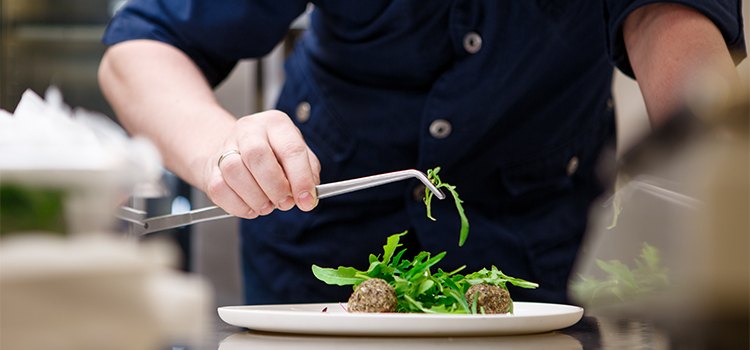Hallmarks of Top Culinary Art Schools
Find out what to expect from top culinary art schools—five ways they're different.

What Makes the Top Culinary Art Schools Right for You
Today's culinary schools offer everything from classic pastry-making programs to the latest in organic cooking, so how's a prospective chef to choose? When it comes to picking a school, the decision isn't always obvious. The usual suspects when it comes to college rankings, like U.S. News and World Report or Peterson's, may provide information on individual schools' culinary programs, but a ranked list of the top schools can be difficult to find.
Luckily, there are a number of characteristics you can keep an eye out for when choosing a top school:
Five Differentiating Factors
1. Run the numbers.
A school's statistics can tell you a lot. A low student-to-faculty ratio means you'll get more personal attention in your classes. A high percentage of students receiving financial aid shows that the school has plenty of options for those in need of tuition assistance, but it may also mean that fees are high. Consistently high job placement rates upon graduation are a clear indicator of a quality culinary program.
2. Check for accreditation.
Top culinary art schools will have some form of accreditation, whether it's granted by one of the regional accrediting bodies recognized by the U.S. Department of Education or by a respected independent organization like the American Culinary Federation. Accreditation guarantees that a school or program meets educational standards for quality of education, student services and other characteristics.
3. Research the faculty.
Do the instructors offer a wide range of courses in the areas you're interested in? What are the professional accomplishments of the faculty? Top culinary schools generally have a diverse pool of instructors with a lot of experience under their belts. They may even bring in luminaries of the chef world as guest faculty.
4. Look for hands-on opportunities.
The top culinary art schools will give you numerous chances to go hands-on, and you'll be able to practice your skills on well-maintained and up-to-date equipment. Look for the opportunity to receive practical training not just in the classroom or lab, but in campus-run restaurants or bakeries.
5. Explore campus career services.
What sort of opportunities are offered to graduating students? Are there resources for networking, job placement and externship placement? Can they help you find an international study program or a work-study program? The career centers at top culinary art schools offer a range of counseling and placement services for those starting out in their careers.
FIND A CULINARY SCHOOL TODAY
Tell us a little about yourself and we'll connect you with schools that offer culinary arts programs.
